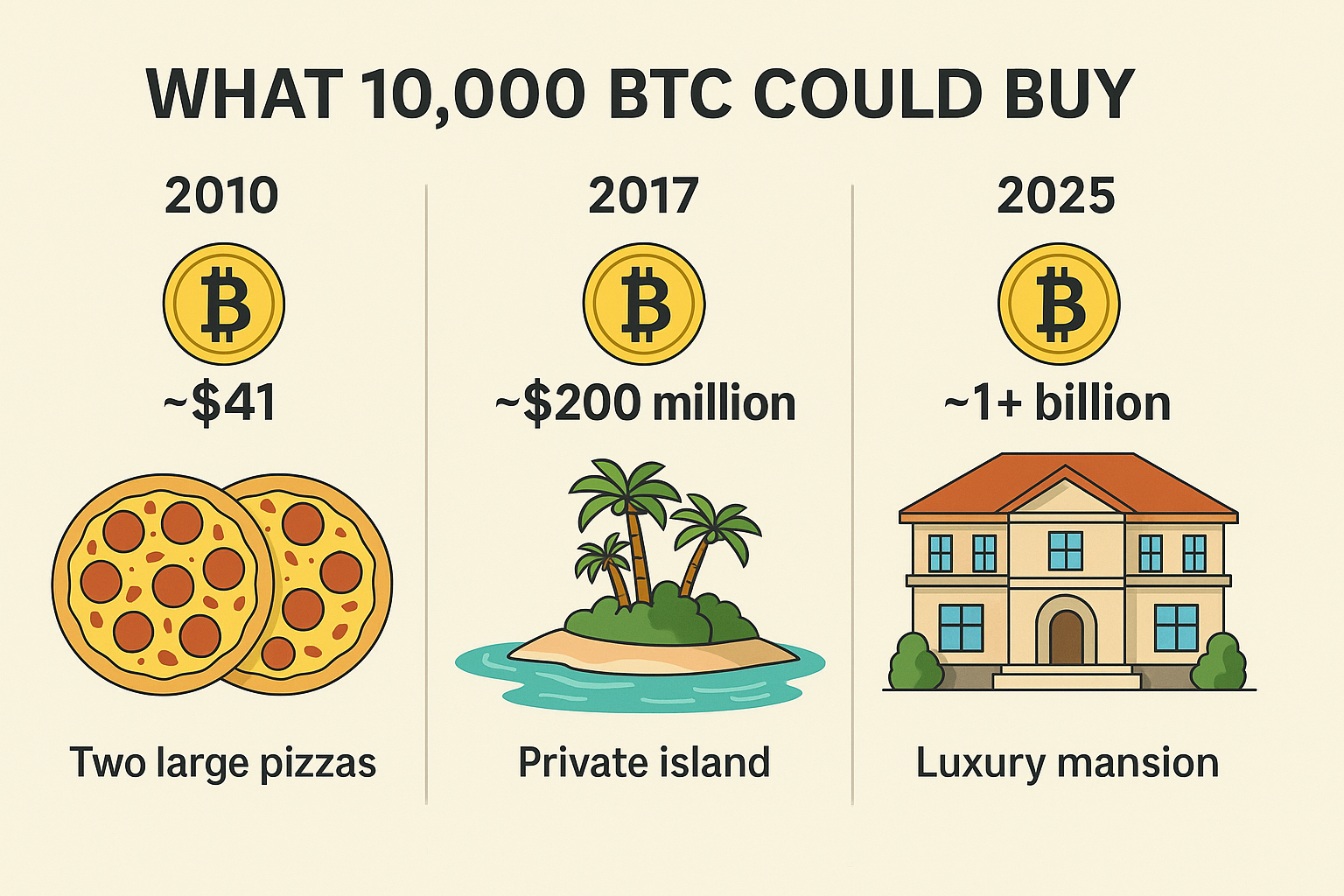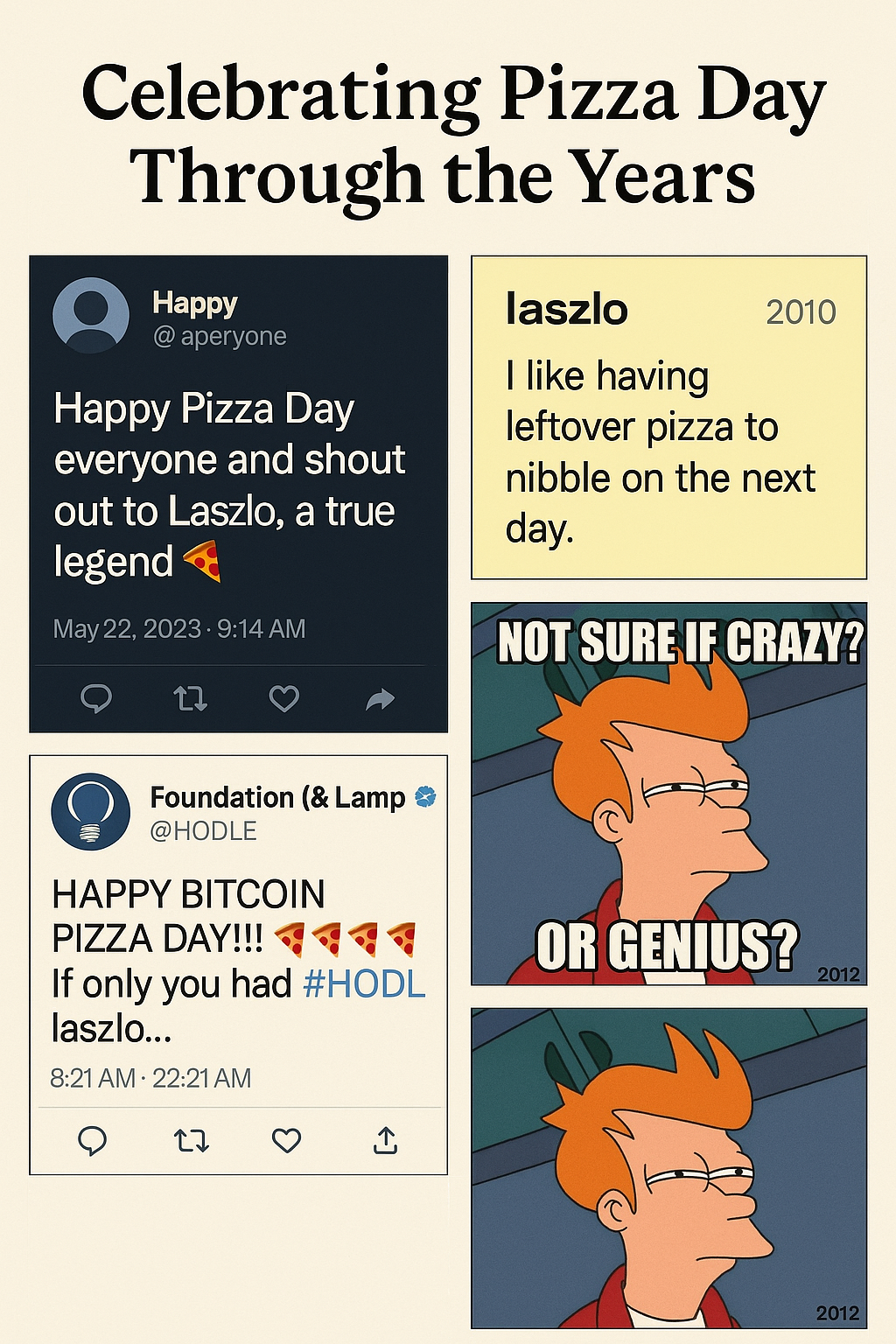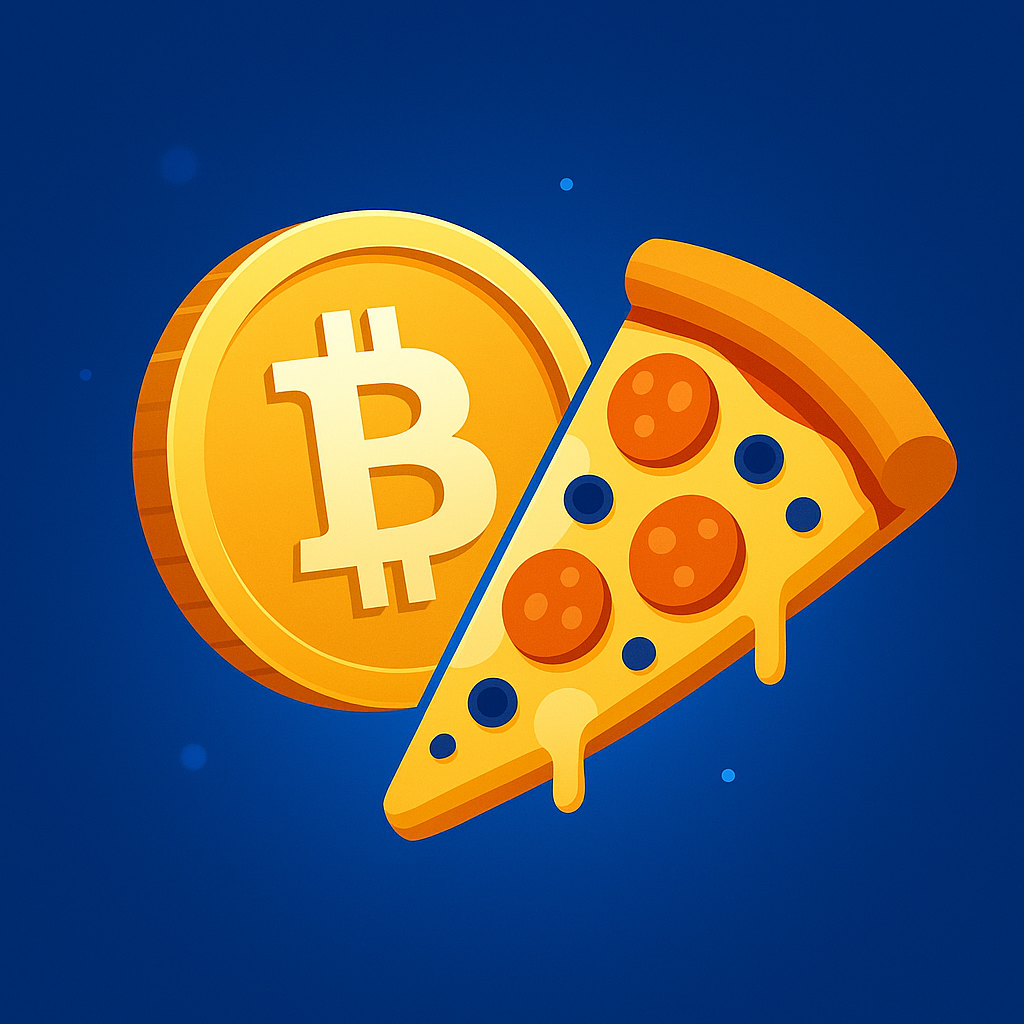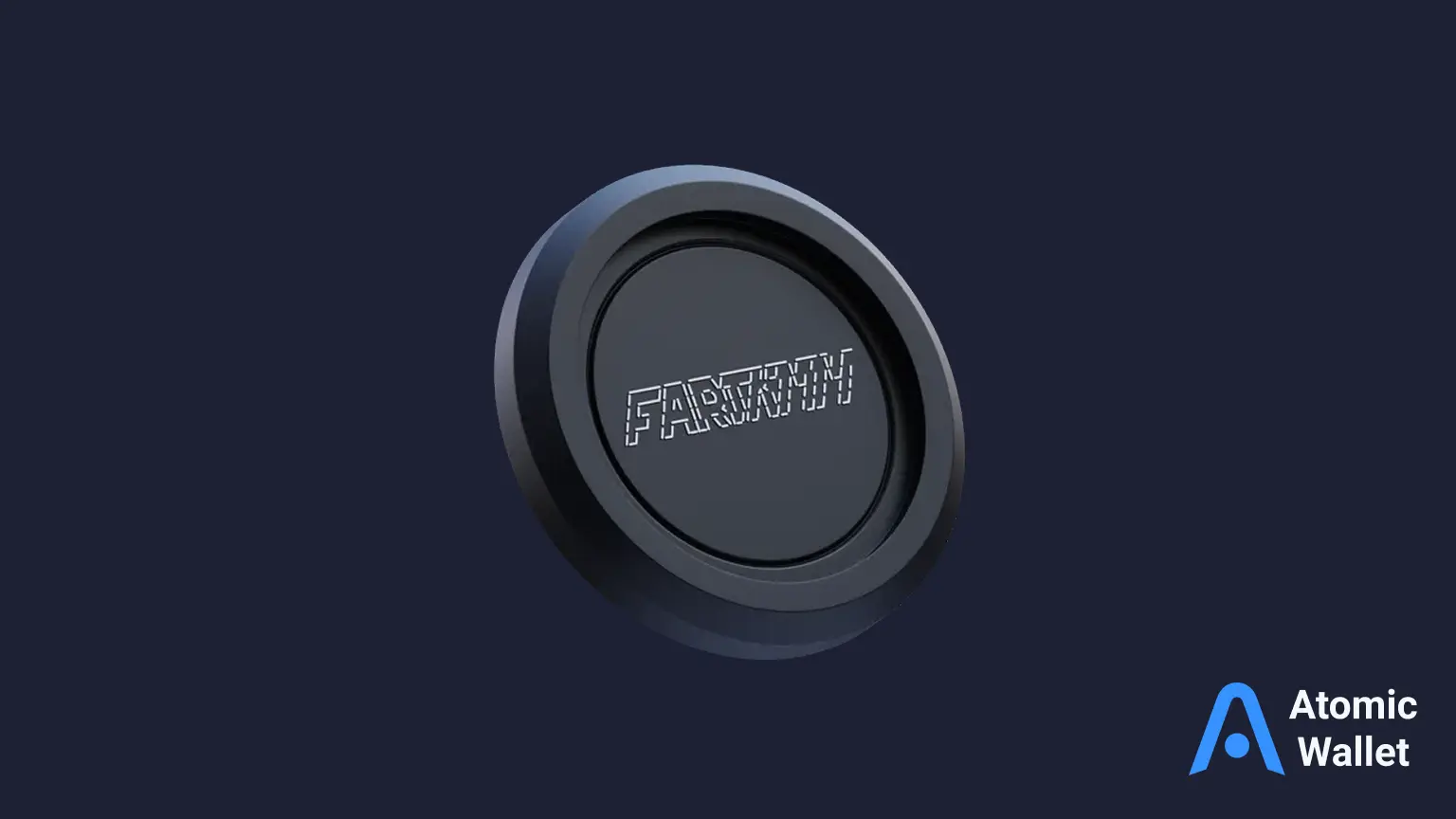Assets

Buy Crypto




Wanna hear about the most expensive dinner in modern financial history? Skip the gold-glazed sushi or champagne-encrusted ice. The truth is much simpler: two large Papa John's pizzas, delivered on a warm May night in 2010.
Enter the time-honored bitcoin pizza story — the legend that proves sometimes the most revolutionary moments happen in cardboard boxes, all thanks to a guy with an appetite and a bold idea.
Picture this: May 22, 2010. Bitcoin trades for fractions of a cent. Cryptocurrency has not yet reached the mainstream. It's just "magic internet money" that people discuss on the periphery of the Internet.
Enter Laszlo Hanyecz, a Florida programmer with a bold solution. He composed a now-forever post on Bitcointalk.org:
"I'll trade 10,000 bitcoins for a couple pizzas. like perhaps two large ones so I will have some leftovers for the day after tomorrow." (Source)
Another adopter, Jeremy Sturdivant (whom online we knew as "jercos"), took his up on the offer. Jeremy ordered the delivery of the pizzas, Laszlo got his supper, and 10,000 BTC digitally changed hands.
What seemed like a mundane conversation between two tech-savvy people would become the precursor to an economic revolution.

Skip ahead to 2025, and those two pizzas are now financial legend. That 10,000 BTC? More than $1 billion today.
Let that sit with you:
Year = Value of 10,000 BTC = What It Could Buy
Investopedia has called this purchase "the first real-world purchase using Bitcoin" and it has been commemorated annually throughout the crypto world ever since.
But its significance goes far, far beyond the eye-popping price tag. This wasn't just an expensive dinner – it was the day that cryptocurrency transitioned from theoretical concept to real money.
(Curious newcomers who want to repeat history can now buy crypto with debit card in seconds.)
May 22nd is not a usual date on the crypto calendar. It's the holy grail of adoption milestones. Bitcoin Pizza Day is the precise moment digital currency crossed the threshold from computer screens and into the physical world.
What's truly mind-boggling about this tale isn't necessarily the cosmic return on investment that pizzas such as these represent. It's that Laszlo didn't have a goal of making history. He didn't speculate. He wasn't trying to become rich. He merely desired food and knew his route: was this new computer money actually spendable?
That one inquisitive question – and the cheese-specked answer – changed everything.
(Want to understand the tech that made it possible? Dive into an in-depth explainer about blockchain.)

The pizza story is significant for more than its astronomical dollar value. It was the first indication that decentralized, peer-to-peer money could function as intended: as money.
Before this transaction, Bitcoin was theoretical. Yes, people could mine it and move it from wallet to wallet, but what is the point of currency if you can't spend it? Laszlo's buying of pizza sealed that rational loop. It demonstrated that Bitcoin could do what all good currencies can do: facilitate exchange.
In the crypto world, we get so focused on technical achievements – halvings, hash rates, protocol upgrades. But this moment of humanity – a guy paying for dinner – could have done more to advance crypto adoption than a thousand white papers would.
And what about Laszlo himself, anyway? Does he wake up every morning thinking about his billion-dollar opportunity cost?
To my surprise, no. In interviews throughout the years, he's always said he doesn't regret it. "It wasn't like bitcoins had any value back then, so the idea of trading them for a pizza was incredibly cool," he's said. (Source)
What he did was provide the crucial real-world use cryptocurrency needed. Without the early believers to actually spend Bitcoin, the entire system might never have grown beyond an experiment in novelty technology.
Where Is Laszlo Hanyecz Now?
Today, Laszlo Hanyecz is known not only for his iconic pizza transaction but also for his early contributions to Bitcoin Core development. As one of the first to release GPU mining code, he helped increase Bitcoin’s hash power and optimize its infrastructure. Though he stepped away from the project years ago, Hanyecz remains a respected figure in crypto history — less a regretful spender, more a foundational pioneer. “It wasn't like bitcoins had any value back then, so the idea of trading them for a pizza was incredibly cool.” - a famous quote from Laszlo.
Inspired? You can always buy BTC today — minus the pizza markup.
The myth of the Bitcoin pizza teaches us all something in the crypto community:

Fifteen years later, that one transaction still inspires. On every Bitcoin Pizza Day, thousands of crypto fans order a pie, share memes, and marvel at how far we've come. From those two pizzas sprouted an entire economic stack—exchanges, wallets, DeFi protocols, NFTs, layer-2s — proving that belief in real-world use matters more than any headline price.
For newcomers, the bitcoin pizza story is equal parts caution and motivation: yes, those slices carry an astronomical opportunity cost, yet they also embody adoption’s core principle—trust put into action. When we raise our slices each May 22, we’re not just celebrating the most expensive pizza bitcoin ever bought; we’re saluting vision, courage, and the hungry programmer who pushed digital money from theory to dinner table.
A billion dollars may be a steep tab for takeout, but the future of global finance? That transaction could go down as the bargain of the century.

FartCoin is a Solana-based meme coin with a $1.6B market cap. Learn about its price, trading stats, and place among top Solana memecoins.